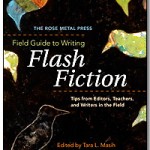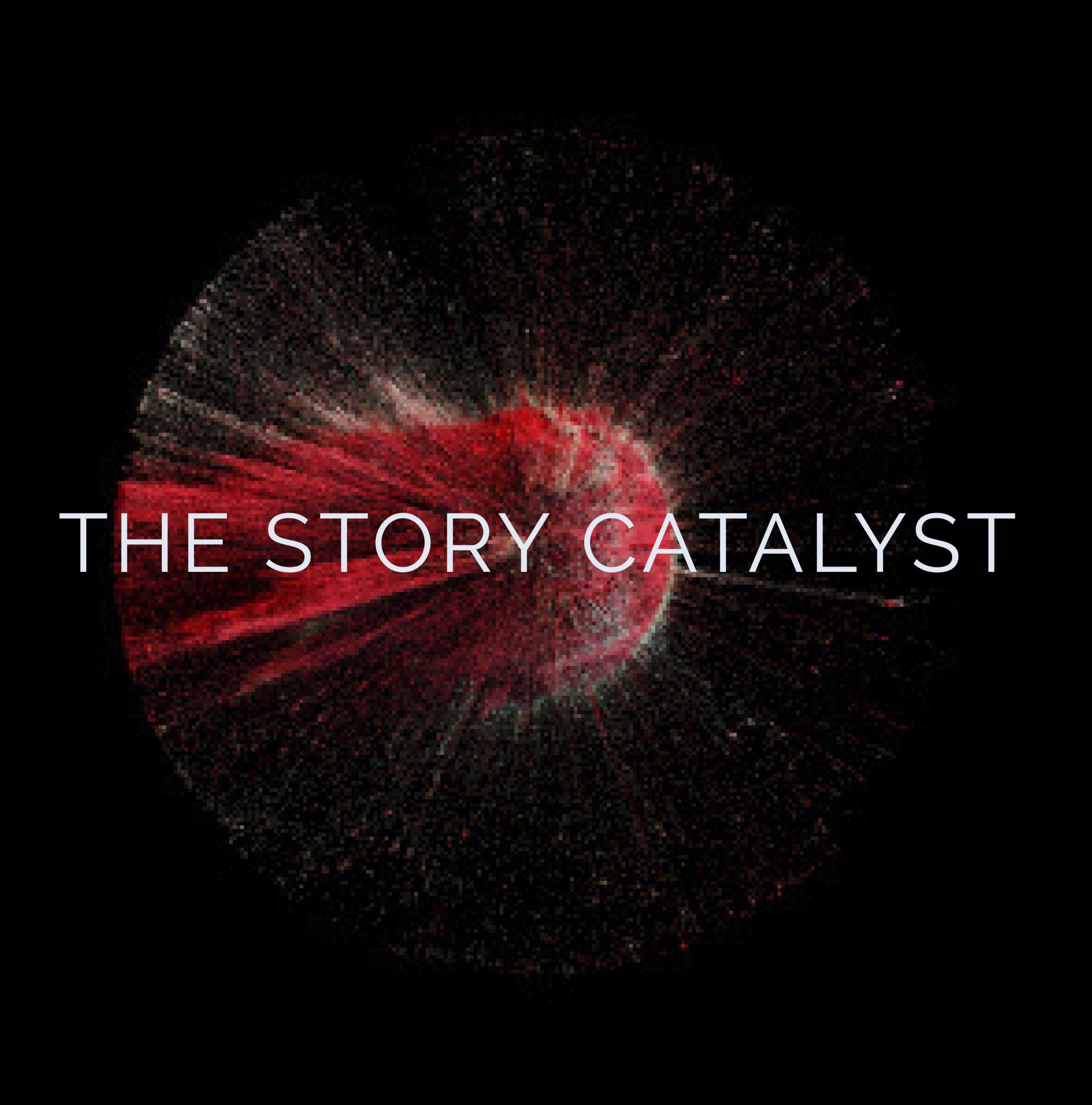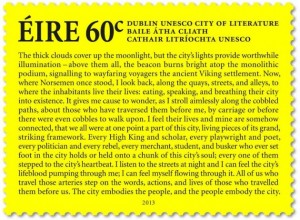“Each drop encases its own separate note, the way each drop engulfs its own blue pearl of light.”
–Stuart Dybek, “Nighthawks”
The image of raindrops Dybek places in our minds is indelible. That is the way that Tara L. Masih begins to describe the effects of flash fiction in her book, “The Rose Metal Press Field Guide to Writing Flash Fiction.”
This week, on “The Writing Life: A Free Weekly Conference Call for Writers,” we took our theme for June – crisp and clear – into an exploration of the flash form. It’s a powerful way to tell stories.
Every Thursday, Terry Price and Carolyn Flynn produce The Writing Life: A Free Weekly Conference Call for Writers to help you carve out the time, space and love for your writing.
On the free weekly chat this week (June 20, 2013), which is available for download as an mp3, Terry Price and Carolyn Flynn discussed what flash forms are and how writers can use them. The discussion covered fiction and creative nonfiction forms.
Notice me!
Flash forms are, by definition, short. And that means they can appear in all sorts of places that long forms cannot, such as postage stamps.
Recently, an Irish teenager won a contest to have his flash nonfiction story appear on an official postage stamp.
It’s a 250-word piece that appears on a bright yellow stamp and is a love letter to his country. Flash forms can appear on parking meters and bus stops and subway walls.
So in this way, flash forms are not just a small piece of writing but rather, they start to serve a marketing purpose – reaching out to a community or a country to bring literature to everyone. Many times, because they can appear in these forms, they serve to advance a country’s culture, much as this piece does.
But what is the flash form, exactly? Is it just something that’s short?
Let’s loop back to the Stuart Dybek line. Why does Masih turn to image to answer this big question? Why not just deliver the rules and regulations?
Pause for a moment and really let yourself feel the effect of this image in your mind, in your senses.
“Each drop encases its own separate note, the way each drop engulfs its own blue pearl of light.”
Stuart Dybek, a description of rain in “Nighthawks”
A raindrop, a small thing, that encases another small thing, a note. And yet, each drop engulfs a “blue pearl of light.” It is compressed, and yet it is vast, at once. I think that is what gives the flash form its power. It’s not just small. It engulfs us; at the same time it plants a singular image in our minds, it lingers on.
Notice, too, the way Dybek uses the senses. The raindrop is seen, but it has a sound, an individual tone. High sensory awareness is key in producing the effect of the flash in flash forms.
Practical matters
Flash fiction and nonfiction are defined by word range, roughly 250 to 1,000 words. But the criteria for flash stories are more than that one basic parameter. A flash piece is not merely a short short story; nor is it prose poetry. It’s a short piece, but it isn’t an interlude or an etude, a study. Think of the flash story as the studio apartment version of a truly lived-in space.
So, if it is a story, then you could argue that it needs to have a plot, characters, conflict and a resolution – in 250 to 1,000 words. Remember that 250 words, set in 12 point Times Roman, double-spaced, is about one letter-sized page. And many flash forms are in the 250- to 400-word range.
For many of us, 250 words might seem like you’re just getting cranked up.
Yet it is a full form of art. It is art in miniature. The answer to how to pull it off lies in this restraint. It is defined by its diminutive size. In confining your story to fewer words, your story becomes more artful, more illuminating.
But let’s delve further. Embedded in the definition is something much more mysterious than that. Masih says the flash form defies categorization. That in and of itself is part of the definition. It stretches against the rules, against the confinement.
Distinct impressions
In a recent interview for the Taos Summer Writers Conference blog, University of New Mexico creative writing faculty member Daniel Mueller indicates that the flash form is defined as much as by its effect as the techniques of craft.
“What makes a flash fiction successful lies in the impression it leaves on the reader,” he says in the Q-and-A interview.
So while its first distinction is simply word limit, it is defined by the effect it produces.
Image defines the form, Mueller goes on to say – a central visual image that produces a kind of tattoo on the reader.
That’s the way flash stories feel. They go more than skin deep.
The image is “tattooed onto the reader’s mind as an objective correlative and emblem of the story as a whole. Successful flash fiction is never slight; instead, it evokes its complexity and depth through precision and compression,” Mueller says.
Precision and compression. The flash story is precise in its central visual image, its word choices, its syntax. It is compressed, so that every single element in the story is rubbing up against the other – compression creates friction, if you will.
In the call today, Terry Price used the metaphor of gunpowder. By itself, gunpowder is not explosive, but when compressed into the barrel of a gun or a cannon, and then it is ignited, it becomes so. Compression creates a powder keg. Every molecule in the story is reactive.
Edgar Allan Poe describes a short story as about a “single effect.” The flash story turns that single effect into an exponential effect through its compression.
Mueller gives several good examples of flash fiction in the interview:
My favorite flash fictions of all time are those contained in Italo Calvino’s highly lyric novel Invisible Cities. Classic flash fictions we’ll likely read in the workshop I’ll lead in July are Russell Edson’s “Ape,” Alice Walker’s “The Flowers,” Elizabeth Tallent’s “No One’s a Mystery,” Fred Chappell’s “Children of Strikers,” Pamela Painter’s “The Bridge,” David Foster Wallace’s “Everything is Green,” Michael Delp’s “Draft Horse,” Gregory Burnham’s “Subtotals,” and T. Coraghessan Boyle’s “The Hit Man.” We’ll also examine some very recent examples of the form from a current issue of Nano Fiction.
Real contact
Let’s look to writer Ron Carlson for another definition of flash fiction. I studied creative writing under Carlson at Arizona State University in 1989-1990. In those two semesters, my writing ability took huge leaps (from dreadful to decent). Carlson teaches at the University of California-Irvine and is director of the MFA program. Carlson is considered by some to be the contemporary master of the short story, but he’s recently taken on the flash fiction form.
In an interview on FlashFiction.net in 2009, Carlson said:
Sometimes, flash fiction depends on language or cleverness and we miss the beating heart. I love a witty or dark little piece, but what we’re aiming for in work long or short is that real contact with character.
Good flash fiction – a piece that is memorable, not fragmentary and ephemeral but something that lingers in us and changes us – requires a well-textured character. Someone the reader perceives as authentic, even if the reader only gets a glimpse. In the fictional dream we create as fiction writers, for a story to seem real, even when it’s a journey of only 400 words, it must give readers what they seek – the sense that what is happening is happening to real people, could happen to them.
But the process of creating real contact with an authentic character can be messy, as we know. Carlson indicates flash fiction does not come naturally to him. In the same interview, he described his writing technique as “spillage. Then I mop like crazy.”
I write much the same way, and judging by Terry Price’s chuckle on our free weekly chat, I gathered he does, too. John Gardner, in “The Art of Fiction,” writes that much of writing is the process of getting to know your story and characters.
And then mopping up.
I do think that the method of spillage, then mopping, points us to an important distinction ¬ – to what flash stories are NOT. They are not abbreviated free-writes, something you started, something you mean to finish one day. They are distilled, self-contained stories.
Mopping is about getting up the excess water. Distillation is defined in Webster’s as the process of purifying a liquid by boiling it and condensing its vapors. The Free Online Dictionary defines distillation as the evaporation and subsequent collection of a liquid by condensation as a means of purification.
So, we let the less precise parts of a story evaporate – water turns to air. And we turn up the flame and bring the story to the boiling point. We look for the essence of the story so that we may achieve its purest form. We choose our central visual image carefully.
What that essence often is: Real contact.
 So, what makes it feel real? Let’s turn to Carlson again, who is quoted in the Rose Metal Press Field Guide to Flash Fiction as saying, “The key to all fiction, long or short, is to remember the wolfman did not want the moon.
So, what makes it feel real? Let’s turn to Carlson again, who is quoted in the Rose Metal Press Field Guide to Flash Fiction as saying, “The key to all fiction, long or short, is to remember the wolfman did not want the moon.
There is resistance in that. The wolfman is identified by the moon, which influences him. The moon is a compulsion. It threatens to define him. He does not want to be ruled by this compulsion. He howls, he moans.
A flash story moves quickly, not just because it is short, but because it is propelled forward. Propelled forward to something someone did not want.
It’s nothing
A flash piece is not nothing. It may seem to be about nothing, but in fact, when it’s propelled by the resistance of a real character and powered by a central visual image, it can be about everything.
One excellent example is Dave Eggers’ flash piece, “Accident.”
The story, told in second person, is about a single event – a middle-aged man hits another car and almost kills a young man.
By its nature, it has a simple plot. A car accident. The middle-aged man is concerned he almost killed someone. He’s fearful the young man and his friends will be angry. The cops come and take an incident report. Routine, right?
But the whole of a being is in it. In one simple event, Eggers gives us a story that allows us to contemplate our failings and ultimately, our death.
The story ends a clean narrative arc. But something has changed irrevocably.
The concluding image, of the boxers, opponents and allies at once, lingers in our minds because real contact has occurred. The character is fully textured.
Flash stories often contain an edginess. What makes “Accident” edgy is the narrator’s private loneliness, which we learn through interiority. And we see his resistance to seeing his own vulnerability, as in:
You are a bad person, you think. You also think: what a dorky car for a teenager to buy in 2005.
The edginess is that the character comes close to being vulnerable. Edgy can mean “near the edge.” The character almost seems like he’s ready to admit — it was his fault. But he distances himself by thinking it’s a dorky car. He resists the idea that the teenagers might think he is drunk or accuse him of being drunk, but doesn’t resist the idea that he is often stupid.
The progression of the story is that he comes nearer and nearer to vulnerability, even as he dances away from it.
All contact is contact. The edginess comes in being near the contact, the resistance to contact.
And the revelation that what he resisted is what he needs, and it is a relief to open to it. Eggers leaves us with the final central visual image. In the case of this story, the image is the destination.
Try it
I came to experimenting with flash fiction after spending three years writing a novel. I found myself dialing down from the long form to shorter forms. It took a few step downs to get back to short stories. I would start to write a short story, and I would develop it so fully, it would bloom into a novella.
When the Geist Literal Literary Postcard Story Contest came along, I pushed myself to take a longer piece I had been working on, one that is in letter form, and I distilled it to three postcards.
If you’re looking for outlets for your flash fiction (or flash nonfiction), one contest to keep your eye on is the Fish Flash Fiction prize, given annually. Awards were just recently announced, to you have an opportunity to experiment for a few months before it will come around again.
Just a note: Fish Publishing defines flash as a 300-word piece, a tiny fragment with a completely resolved and compelling storyline. So, there you go
A final note
After today’s chat, I flew to Nashville. When I landed at the Hotel Preston, a songwriter convention was going on, which meant that me and a guy here for a railroad builders convention were the only people in the building who weren’t writing songs.
But then again, I thought, as I listened to the singers in the Pink Slip Lounge tell me their three-minute stories, maybe I am.


